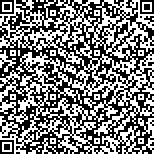| 摘要: |
| 目的 探究黄河流域引黄灌区农业用水效率动态演进及其驱动因素,有助于提升农业用水效率,缩小灌区之间农业用水效率差异,完善黄河流域水资源管理政策。方法 文章构建子矢量DEA测度河南省引黄灌区农业用水效率,结合ArcGIS图示法揭示其时空演变特征,并运用面板Tobit模型揭示其驱动因素。结果 (1)从时间演化看,2007—2021年河南省引黄灌区农业用水效率由0.55上升至0.59,均值为0.57,呈先降后升而后水平波动的趋势,说明农业用水效率仍有较大提升空间;中型引黄灌区农业用水效率平均值>灌区整体农业用水效率平均值>大型灌区农业用水效率平均值;不同灌区农业用水效率呈“两头重,中间轻”的特征。(2)从空间演化看,河南省引黄灌区农业用水效率呈“南高北低”的非均衡空间分布,北部较高和高农业用水效率灌区数量经历了先下降后上升再下降的倒“N”型变化趋势。(3)农村人均可支配收入和有效灌溉水平的提升对灌区农业用水效率具有显著正作用;城镇化水平与农业用水效率之间存在“U”型关系;每千公顷农作物种植用水量和单位农业增加值用水对灌区农业用水效率呈显著负作用。结论 根据黄河下游引黄灌区农业用水效率及其驱动因素的研究结果制定政策措施,以提升引黄灌区农业用水效率。 |
| 关键词: 引黄灌区 农业用水效率 时空分异 城镇化水平 河南省 |
| DOI:10.7621/cjarrp.1005-9121.20240907 |
| 分类号:F30 |
| 基金项目:国家社会科学基金青年项目“西北干旱区土地经营规模和灌溉效率双目标优化及实现路径”(23CJY054);河南省软科学研究计划项目“河南省引黄灌区农业用水效率提升路径及保障机制研究”(232400410106);国家社会科学基金“传统农区集体经济组织双重治理的实践逻辑、驱动机理与协同优化研究”(22BJY179) |
|
| THE DYNAMIC EVOLUTION AND DRIVING FACTORS OF AGRICULTURAL WATER USE EFFICIENCY IN THE YELLOW RIVER IRRIGATION DISTRICTS: A CASE STUDY OF HENAN PROVINCE |
|
Li Guifang, Ma Hengyun, Zhao Cuiping
|
|
College of Economics and Management, Henan Agricultural University, Zhengzhou450046, Henan, China
|
| Abstract: |
| This study is intends to explore the changing patterns of agricultural water use efficiency and the factors that influence it in the irrigation districts of the Yellow River, and so as to enhance agricultural water use efficiency, minimize disparities between irrigation districts, and optimize water resource management policies in the Yellow River Basin. The Sub-vector DEA approach was used to assess the efficiency of agricultural water usage in the Yellow River irrigation areas of Henan province, and the ArcGIS graphical approach was used to uncover geographical and temporal evolution features, while the panel Tobit model was used to find affecting elements. The results showed that: (1) Temporal evolution characteristics: Over the period of 2007 to 2021, the agricultural water usage efficiency in the Yellow River irrigation districts of Henan province witnessed a rise from 0.55 to 0.59, with an average value of 0.57. The average agricultural water use efficiency of the medium-sized Yellow River irrigation districts was higher than that of the overall irrigation districts, which in turn was higher than that of the large-scale irrigation districts. Furthermore, the agricultural water use efficiency varied significantly across various irrigation districts, with a pattern of being high at the extremes and low in the center. This suggested that there was sufficient space for enhancing the agricultural water use efficiency in these districts. (2) The spatial evolution features of agricultural water usage efficiency in the Yellow River irrigation districts of Henan province exhibited an uneven distribution, with greater values seen in the southern areas and lower values observed in the northern regions. The number of high-efficiency irrigation districts exhibited a northward trend in an inverted “N” pattern. (3) Rural per capita disposable income and effective irrigation level positively influenced the improvement of agricultural water usage efficiency. There was a direct correlation between the extent of urbanization and the efficiency of agricultural water use. Furthermore, the water consumption per thousand hectares of crops and the water consumption per unit of agricultural added value had a substantial detrimental effect on the agricultural water use efficiency in the Yellow River irrigation areas. Ultimately, specific strategies should be developed based on the key elements that influence agricultural water usage efficiency in the Yellow River irrigation districts in order to enhance its performance. |
| Key words: Yellow River Irrigation districts agricultural water use efficiency spatial-temporal differentiation urbanization level Henan province |

